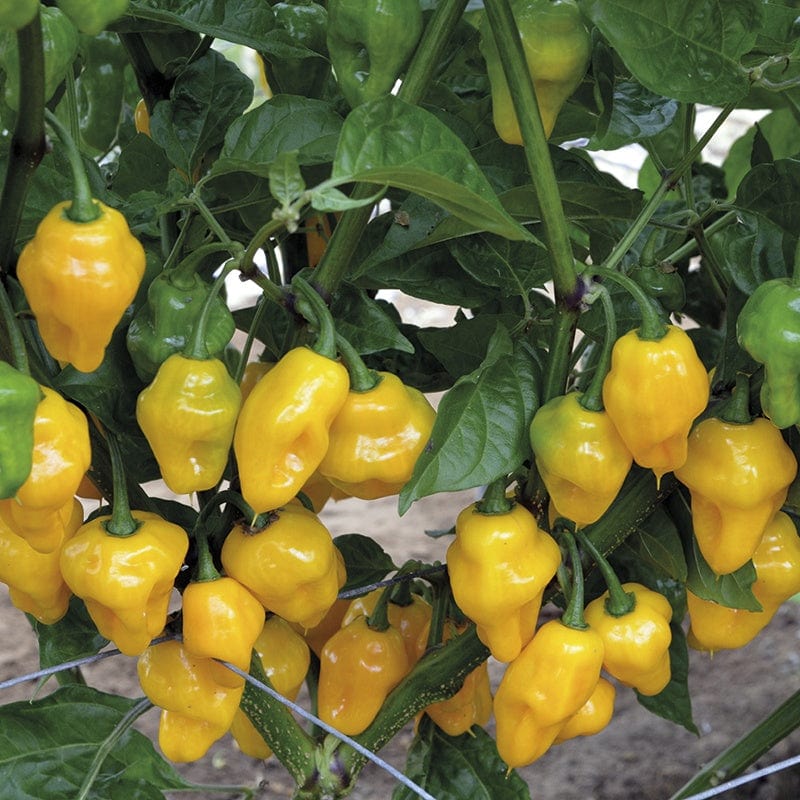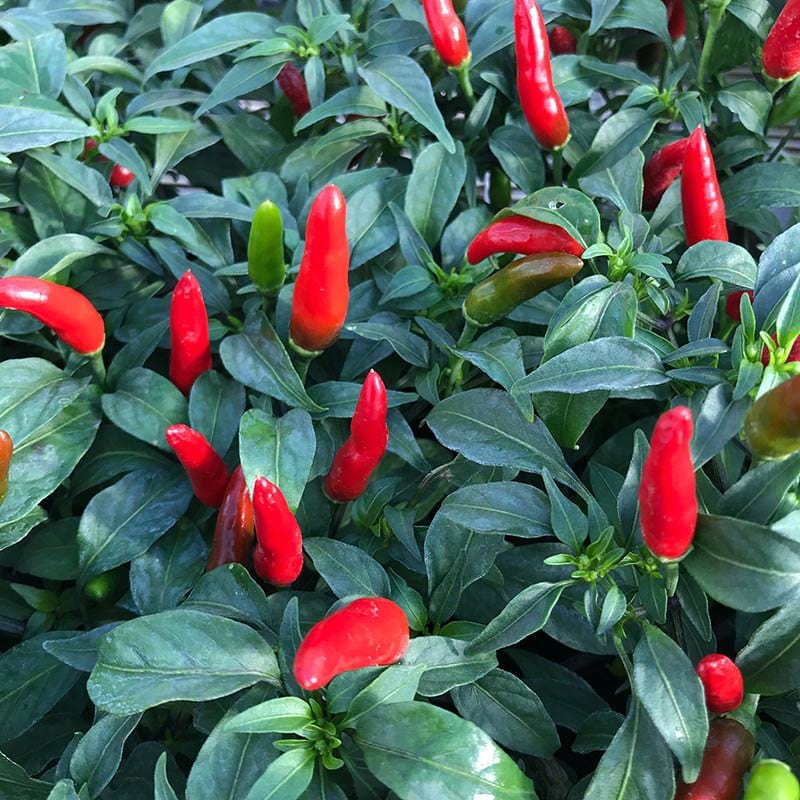Watering
You should water chilli plants little and often to ensure the soil remains moist, especially when conditions are warmer in summer. However, you shouldn’t allow the soil to get soaking wet, as this can lead to diseases such as root rot.
Mulching
Adding a layer of mulch, such as garden compost, well-rotted manure, leaves or straw, can help to keep soil moist and prevent it from drying out. This can be quite useful in summer when soil is more likely to become dry.
Feeding
Chilli plants should be fed each week with a high-potassium liquid fertiliser once they first set fruit. This provides them with essential nutrients for growth.
Training
Some larger varieties of plants may need support. So, you should tie your plants to 60cm (24in) canes if you have one of these, ensuring that you’re gentle with the brittle stems.
Pinching Out Tips
You should pinch out the growing tips when your plants reach about 20cm tall, as this will lead to better plant and crop growth.
Producing Hotter Chillies
An unusual recommendation for a growing guide, but you can experiment with putting your plants under stress to achieve hotter chillies. This can be done by watering your plants less often, and avoiding feeding or snipping off stems or fruit when fruit begins to set. Using these techniques could result in a reduced yield or no yield, though doing so can cause the chillies to reach hotter flavours than usual.

 Ground Prep
Ground Prep

 How and When to Sow Chilli Seeds
How and When to Sow Chilli Seeds

 Plant Care
Plant Care

 How and When to Harvest Chillies
How and When to Harvest Chillies

 Problems
Problems
Ground Preparation
Sowing
Plant Care
Harvesting
Problems




























Leave a comment
All comments are moderated before being published.
This site is protected by hCaptcha and the hCaptcha Privacy Policy and Terms of Service apply.